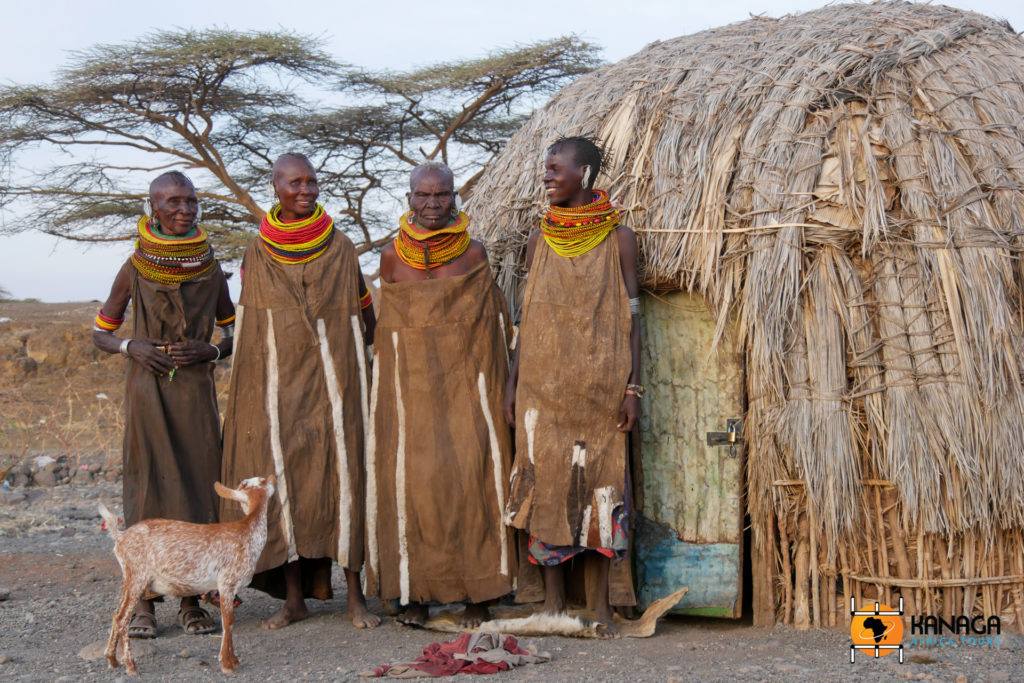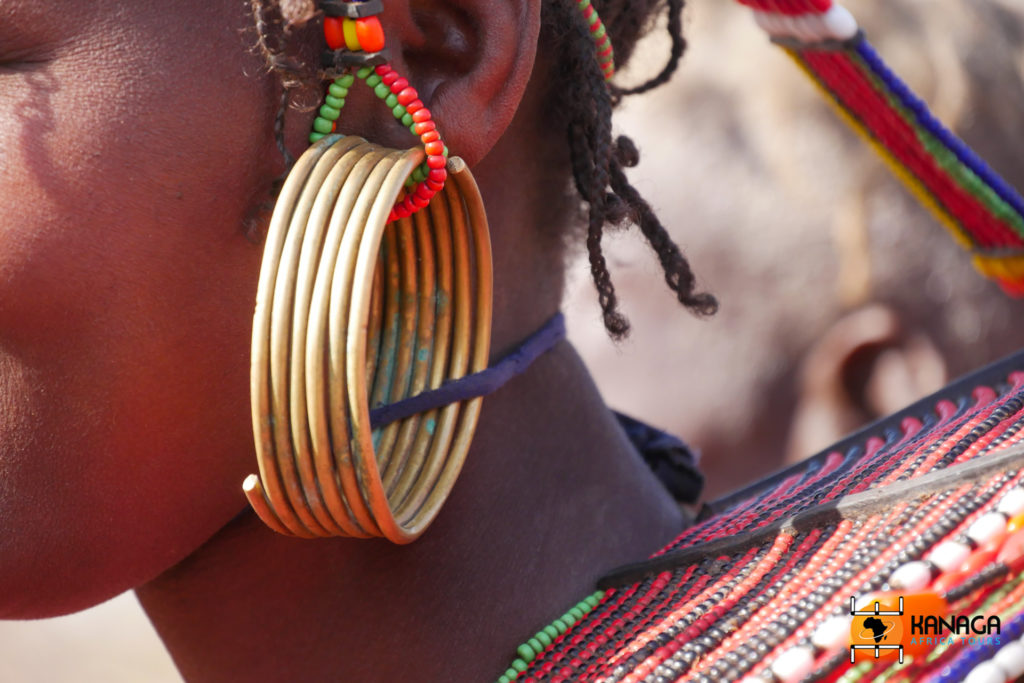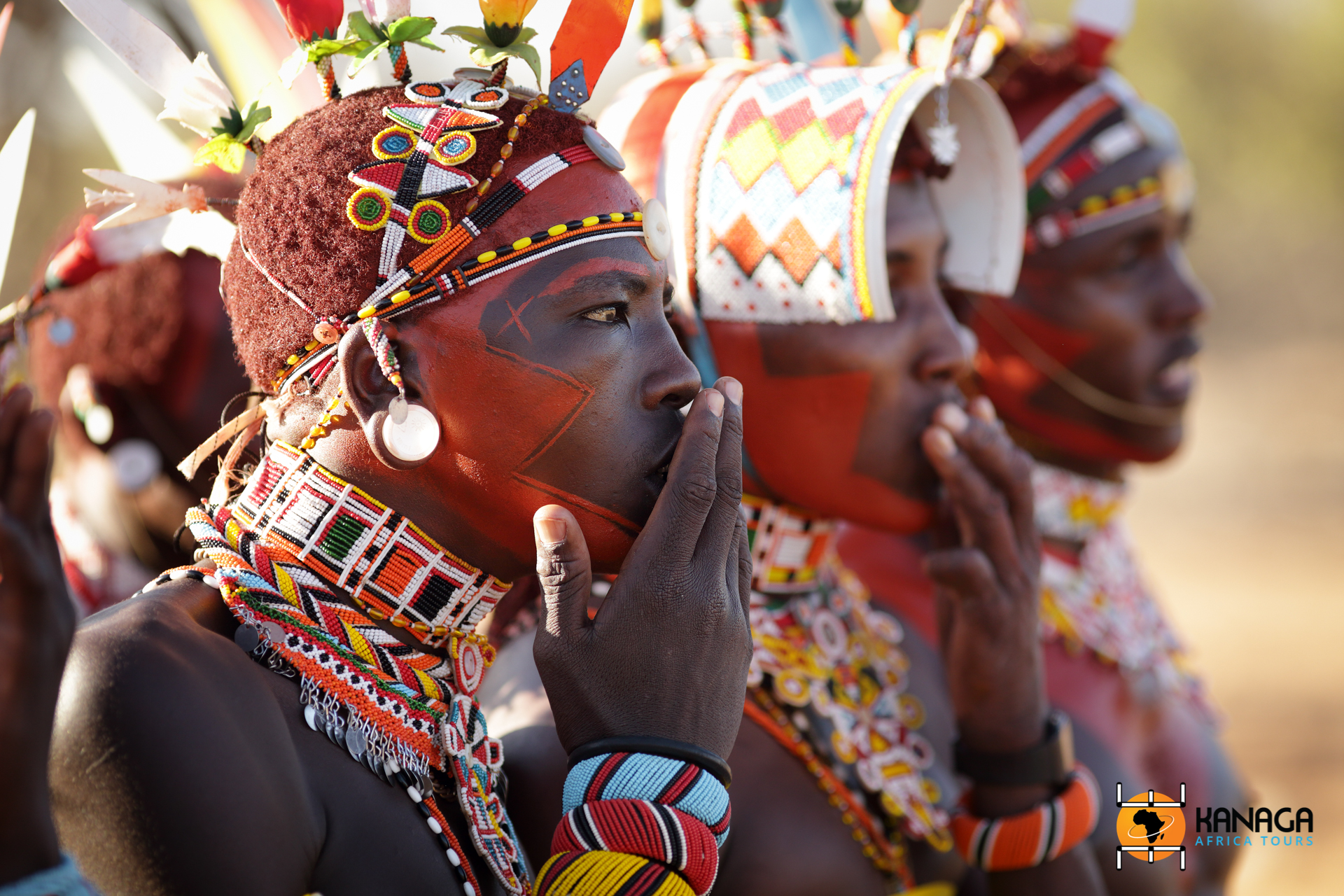To the north of Mount Kenya and the central region, the landscape gradually changes, becoming increasingly desolate moors inhabited by populations that have remained essentially nomadic and strongly identified. It’s a Kenya unknown to most, “alternative”, far from the busy trails of the great national parks of the south, or the paradisiacal beaches of the Indian Ocean, but precisely for this reason the most authentic and evocative Kenya.
The Samburu Reserve (with nearby Buffalo Springs and Shaba), takes its name from the Nilotic population of the same name, who migrated from the Nile Valley with the Maasai in the 16th century, separating from them as they continued their journey south. It is therefore not surprising, given the common origin, that there is a strong similarity between the two semi-nomadic peoples and a continuity in customs and traditions, including the Maa language.
Unlike the large parks in the south, the tourist presence in the Samburu is sporadic and the wildlife still moves about completely undisturbed. The added value of often being completely alone when faced with sightings of the “Special Five” and large herds of mammals or carnivores, make it one of the most “exclusive” parks in Kenya, with the same concentration of wildlife as the Maasai Mara or Amboseli, and a landscape variety similar to Tsavo. Acacias, dum palms, green valleys or barren savannahs, hills and mountains, rivers and ancient volcanoes, make up one of Kenya’s most impressive landscapes.
Geographically, it can be considered the gateway to the boundless sunburnt and drought-ridden lands of the north, sporadically inhabited by populations of nomadic shepherds, who inexplicably chose these inhospitable expanses as their home. But the answer probably lies in the charm of the environmental desolation, which has made these peoples, with their spirit of adaptation, the sole custodians of the secrets of a life on the edge of the essential.
The desert crossing between the Samburu Reserve and Lake Turkana is one of the most fascinating and exciting experiences Kenya has to offer, marked by immense expanses of wasteland, sporadically inhabited by tribes and camps, which remain on the edge of reality.
One of the first encounters is with the Samburu women, richly adorned with marvellous beaded and leather necklaces, or the ‘military’ (manyatta) warrior camps, with their splendid decorations and tribal scarifications, and their suggestive hypnotic dances, among the dung and mud huts, the herds of zebu, in a surreal scenario of dust and acacias.
Further north, Kaisut and Chalbi deserts open up, interrupted only by the miraculous tropical mountainous oasis of the Marsabit Park, a veritable carrefour of nomadic Muslim populations, mainly of Cusco origin, who constantly move with their herds of dromedaries and goats in search of water, pasture and provisions. The dromedary caravans of the Borana, with their colourful fabrics and beads, the gob camps of the Rendille, closest to the Samburu and Maasai culture, with their characteristic colourful necklaces and ingenious huts made of mats and skins.
Entering the salty expanses of the Chalbi desert, it will be easy to meet the clans of Gabbra shepherds, of Oromo origin, brave inhabitants of one of the most deserted areas of Kenya, as inhospitable as their land is hospitable.
As you approach the Lake Turkana region, the landscape becomes more stony and volcanic, the scenery is dotted with small circular huts made of wood, skins and dum palm leaves, inhabited by the ancient Nilotic Turkana people. Remaining animists, immediately recognisable aesthetically by their beautiful circles of narrow rigid necklaces and leaf-shaped earrings, they were once considered the most ruthless nomadic warrior people in the region. Today, many of them have turned to fishing, due to a gradual drying up of the land, a profession they share on the alkaline waters of the lake, with the tiny fishing community of El Molo, who face the stormy storms with their small rafts of dum logs.
Descending towards the south-west, in the direction of Lake Baringo and the paradisiacal Lake Nakuru, you will meet the clans of the Pokot people, a Nilotic group of ancient origin, who legend says were the only victors over the ruthless Turkana and Maasai warriors. Today they are dedicated to pastoralism and agriculture and live in characteristic circular huts made of wood and a thatched roof. The women adorn themselves with beautiful discoidal necklaces and huge circular earrings.







